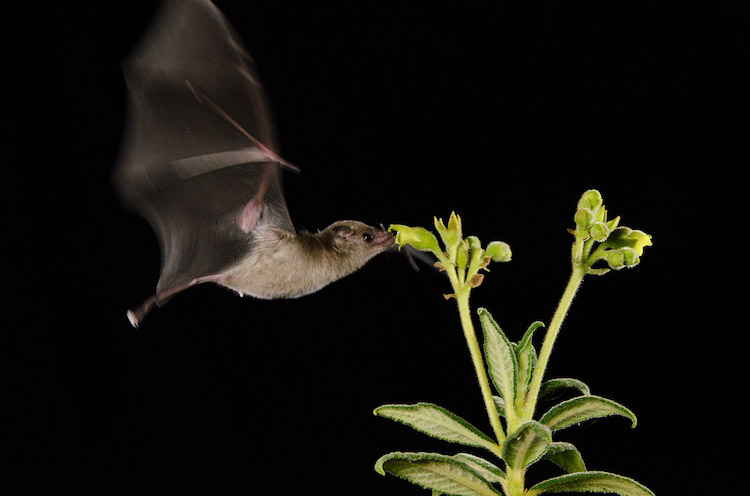Many of humanity’s most ingenious breakthroughs have been directly inspired by Mother Nature. There are endless examples of biomimicry in technology and design: airplane wings were inspired by birds; Velcro was inspired by plant burrs; there are even shark skin inspired swimsuits. People have often turned to nature when looking for solutions to a tricky problem, and for good reason: by tapping into biology, we’re essentially taking advantage of the world’s 3.8 billion years of evolutionary R&D.
Sonar navigation: from submarines to robots
Sonar (an acronym for sound navigation ranging) has been harnessed by humans since World War I to counter the threat of submarine warfare. In the same way that dolphins, bats (and even some birds and shrews) use echolocation, sonar technology works by emitting sound pulses and determining the nearness of objects by the speed at which the echo returns.
We were amazed how reliably these reflectors were detected even within clutter-rich surroundings. – Ralph Simon, Vrije Universiteit Amsterdam
Sonar navigation has in recent years been employed in a range of new technologies including self-driving robots. Sonar sensors play an important role in these systems, as they are inexpensive and energy efficient.
“However, they also have some limitations,” says Prof. Jan Steckel, who works at the Department of Electronics and ICT at University of Antwerp. “Their measurements can be ambiguous, and this can cause confusing situations for the autonomous robot.”
Looking for a way to overcome these issues, the Steckel teamed up with his colleague Dr. Ralph Simon from the Ecological Science Department of the Vrije Universiteit Amsterdam. Together, they went in search of a solution and found one in the form of a special evolutionary relationship between bats and flowers. Their findings were recently published in the scientific journal PNAS.
Bats and flowers: a relationship based on sound
Over millions of years, bats have evolved an amazing ability: echolocation. By emitting clicks and listening for echoes, bats can hunt down prey or seek out food in complete darkness. However, in the same way that an acoustically messy environment can throw off a robot’s sonar sensors, complex obstacles also pose a challenge for bats.
“It’s an ingenious way of sensing the world and it works great,” Simon explains. “But sometimes things become difficult. For example, when a bat’s food source is very close to vegetation. And yet, there are species of bats that feed on flower nectar, so they obviously have to fly very close to plants and search for flowers.”
Bioinspired sonar signs can be very efficient tools, opening doors for new applications of sonar sensors and a safer autonomous navigation. – Jan Steckel, University of Antwerp
Fortunately, through a process of mutually beneficial evolution, the plants themselves have come up with a solution to acoustic clutter. This is in the best interest for the plants, as they have a symbiotic relationship with the bats: the flowers provide the bats with a food source, in the form of sugary nectar, and in turn the bats provide a pollination service. So, to guide the bats, the plants have evolved specially shaped floral parts that act as sonar reflectors. This makes the plants acoustically conspicuous, so they stand out to the bats even through dense foliage.
To read more about AI and autonomous robots, check out this previous BioVox article.
From organic signal to artificial signpost
The next step was to see if the acoustically adapted flower shapes could be used to design artificial sonar beacons, and whether these could help improve robot navigation. Inspired by the flowers, Simon, Steckel and their German colleagues from the University Erlangen-Nuremberg developed artificial sound reflectors and tested them on a self-driving robot. The results were astounding, according to Simon: “We were amazed how reliably these reflectors were detected even within clutter-rich surroundings.”

Image: A bat sensing a flower based on sound reflections (top) and a robot detecting a sonar signpost (courtesy of the University of Antwerp).
Not only were the flower-inspired signposts well detected by the robots: the robots were also able to discern different reflector shapes. By using differently shaped reflectors as essentially sonar traffic signs, the robots were able to navigate through an unfamiliar environment. The researchers demonstrated that these types of sonar reflectors could have a wide range of applications and can advance sonar-guided systems.
“Bioinspired sonar signs can be very efficient tools, opening doors for new applications of sonar sensors and a safer autonomous navigation.” Jan Steckel concluded.
Header image: A bat feeding from a flower (courtesy of the University of Antwerp).
Images and quotes courtesy of the University of Antwerp.


